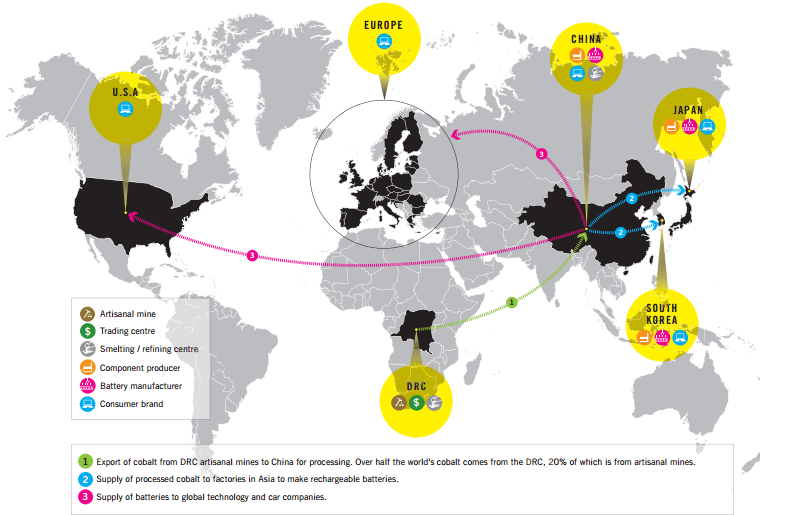Analyzing The Economic Impact Of Trump's Tariffs On California

Table of Contents
Impact on California's Agricultural Sector
California's agricultural sector, a cornerstone of the state's economy, bore the brunt of Trump's tariffs in several significant ways.
Increased Costs for Farmers and Reduced Exports
Tariffs on imported goods directly increased input costs for California farmers. Higher prices for fertilizers, machinery, and other essential inputs squeezed profit margins. Simultaneously, retaliatory tariffs imposed by other countries significantly reduced export markets for key California agricultural products.
- Almonds: Faced reduced demand from China, a major importer.
- Wine: Experienced decreased exports to the European Union.
- Dairy Products: Suffered from reduced competitiveness in international markets.
These increased costs and reduced export opportunities led to lower farm incomes and economic hardship for many agricultural producers.
Retaliatory Tariffs and Market Access
The imposition of Trump's tariffs provoked retaliatory measures from several key trading partners. These retaliatory tariffs specifically targeted California agricultural products, resulting in significant losses in export volume and value.
- China: Imposed tariffs on almonds, wine, and other California agricultural goods.
- European Union: Imposed tariffs on various agricultural products, impacting California exporters.
- Mexico: While a major trading partner, tariffs on certain products led to increased costs and market instability.
The resulting loss of market access severely hampered California's agricultural exports, contributing to economic instability within the sector.
Effects on California's Manufacturing Industry
California's diverse manufacturing sector also experienced significant challenges due to the tariffs.
Increased Costs of Production and Reduced Competitiveness
Tariffs on imported raw materials and components used in manufacturing significantly increased production costs for California manufacturers. This, in turn, reduced their competitiveness in both domestic and international markets.
- Electronics Manufacturing: Relied heavily on imported components, leading to higher production costs.
- Automotive Parts Manufacturing: Faced increased costs for imported steel and other materials.
- Textile Manufacturing: Saw increased costs for imported fabrics and yarns.
This increase in production costs forced many manufacturers to raise prices, potentially leading to decreased sales and reduced market share.
Job Losses and Business Closures
The combination of increased production costs and reduced competitiveness contributed to job losses and business closures within California's manufacturing sector. While precise figures linking job losses solely to tariffs are difficult to isolate, several studies suggest a correlation between increased trade protectionism and reduced employment in manufacturing.
- Reports indicated potential job losses in the apparel and footwear manufacturing sectors.
- Some smaller manufacturers were forced to close due to the inability to compete with lower-cost imported goods.
The loss of manufacturing jobs had a significant impact on the California economy and workforce.
The Role of Trade Relationships and Supply Chains
Trump's tariffs significantly disrupted California's intricate global supply chains and strained its relationships with key trading partners.
Disruption of Global Supply Chains
California businesses rely heavily on global supply chains for sourcing raw materials and components. Tariffs disrupted these established relationships, forcing companies to seek alternative suppliers, often at increased cost and with longer lead times.
- Sourcing Challenges: Finding reliable alternative suppliers proved difficult and expensive for many California companies.
- Increased Transportation Costs: Shifting to new suppliers often led to increased transportation costs.
These supply chain disruptions resulted in increased uncertainty and added complexity to business operations.
Impact on Bilateral Trade Agreements
Trump's tariffs damaged California's trade relationships with key partners like China and Mexico. The uncertainty created by the trade disputes discouraged investment and hindered the development of new trade agreements.
- China: Trade tensions reduced investment and collaboration opportunities with a major economic partner.
- Mexico: The renegotiation of NAFTA (now USMCA) created uncertainty and disruption in cross-border trade.
The strain on these trade relationships had a long-term negative impact on California's economic growth.
Consumer Impact and Inflationary Pressures
The economic effects of Trump's tariffs were not confined to businesses; California consumers also felt the impact through higher prices and reduced purchasing power.
Increased Prices for Consumers
Tariffs contributed to higher prices for a wide range of goods and services in California, impacting household budgets.
- Clothing and Footwear: Prices increased due to tariffs on imported textiles and manufacturing.
- Electronics: Prices rose due to tariffs on imported components.
- Agricultural Products: Prices increased as import costs rose and export markets shrank.
This increase in prices led to reduced consumer spending and dampened economic growth.
Reduced Consumer Purchasing Power
Higher prices for essential goods and services directly reduced California consumers' purchasing power, disproportionately affecting low- and middle-income households.
- Data showed a correlation between the tariff increases and reduced consumer spending.
- The impact on lower-income households was more significant due to a higher proportion of income spent on essential goods.
The resulting decrease in consumer spending further hindered economic growth in California.
Conclusion: Summarizing the Economic Impact of Trump's Tariffs on California
In conclusion, the economic impact of Trump's tariffs on California was largely negative. While certain sectors might have experienced temporary gains, the overall effect was a reduction in export markets, increased production costs, supply chain disruptions, higher consumer prices, and reduced consumer purchasing power. The tariffs strained relationships with key trading partners, creating economic uncertainty and hindering long-term growth. Understanding the economic impact of these policies is crucial for policymakers. Assessing the effects of Trump's tariffs should inform future trade strategies, emphasizing the importance of stable and predictable trade relationships for California's economic prosperity. Further research is needed to fully understand the long-term effects of these policies and to explore alternative trade policies that promote sustainable economic growth.

Featured Posts
-
 The Cobalt Markets Response To The Drc Export Ban The Significance Of The Upcoming Quota Plan
May 15, 2025
The Cobalt Markets Response To The Drc Export Ban The Significance Of The Upcoming Quota Plan
May 15, 2025 -
 Androids Design Evolution A Deep Dive Into The New Look
May 15, 2025
Androids Design Evolution A Deep Dive Into The New Look
May 15, 2025 -
 Small App Big Threat How One Obscure Program Could Disrupt Meta
May 15, 2025
Small App Big Threat How One Obscure Program Could Disrupt Meta
May 15, 2025 -
 Kktc Isguecue Piyasasi Yeni Dijital Veri Tabani Rehberi Carsamba Guenue Aciliyor
May 15, 2025
Kktc Isguecue Piyasasi Yeni Dijital Veri Tabani Rehberi Carsamba Guenue Aciliyor
May 15, 2025 -
 Reshaping Indias Insurance Landscape Ind As 117s Transformative Potential
May 15, 2025
Reshaping Indias Insurance Landscape Ind As 117s Transformative Potential
May 15, 2025
Latest Posts
-
 San Diego Padres Secure 10th Win Beat Athletics
May 15, 2025
San Diego Padres Secure 10th Win Beat Athletics
May 15, 2025 -
 Taylor Wards Walk Off Grand Slam Leads Angels To Victory Against Padres
May 15, 2025
Taylor Wards Walk Off Grand Slam Leads Angels To Victory Against Padres
May 15, 2025 -
 1889 2024 Padres Historic Mlb Achievement
May 15, 2025
1889 2024 Padres Historic Mlb Achievement
May 15, 2025 -
 9th Inning Heroics Taylor Wards Grand Slam Secures Angels Win Over Padres
May 15, 2025
9th Inning Heroics Taylor Wards Grand Slam Secures Angels Win Over Padres
May 15, 2025 -
 Padres Make Mlb History Unmatched Feat Since 1889
May 15, 2025
Padres Make Mlb History Unmatched Feat Since 1889
May 15, 2025
